Henri Chopin. Dactylopoèmes
Artvisor is pleased to present Henri Chopin. Dactylopoèmes, an exhibition that brings into focus the radical and groundbreaking work of French avant-garde artist Henri Chopin (1922-2008). “Dactylopoème” is a term that the artist first coined during the 1960s to refer to a new genre of poetry produced through the meticulous layering of letters, numbers, and signs onto a sheet of paper. Oftentimes the result is visually dense textures created with a typewriter, compacted into geometric forms. Chopin’s visual poems are symphonies of freedom that show an unwavering commitment to liberation in a post-war Europe.
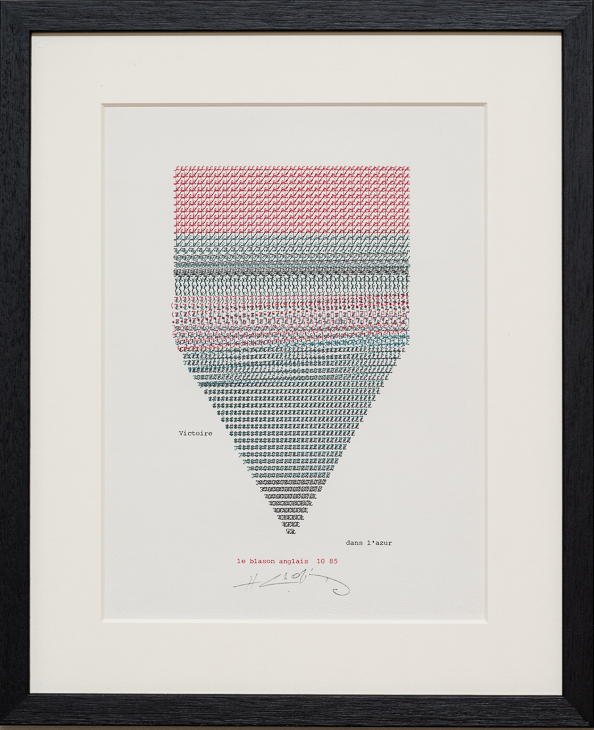
At War with Language
Having escaped from a labour camp during the Second World War, Chopin spent time with the advancing Red Army before he was recaptured by the Germans and sent West on a “death march”. These extraordinary early experiences shaped the artist’s anarchic vision of reality and precipitated his deep aversion to any system of dictatorial power.
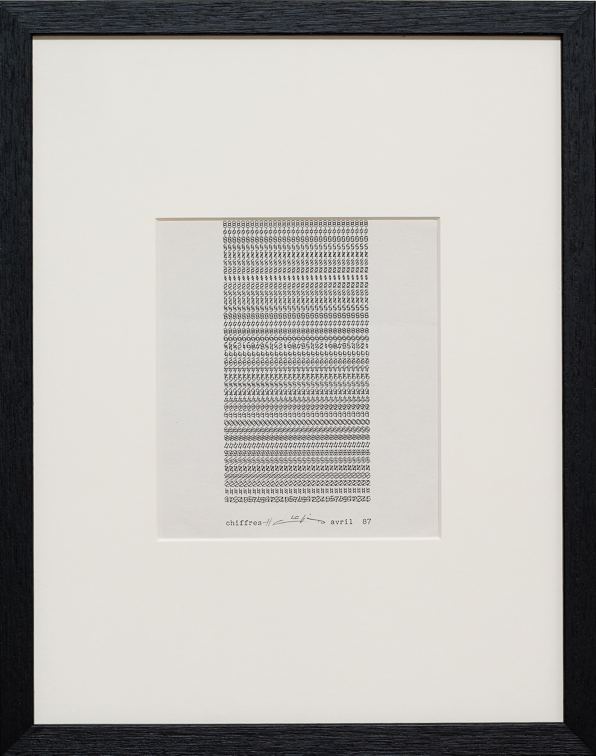
Chopin’s project as an artist, informed by his encounters with the Lettrist movement during the 1950s, centres on the deconstruction of language, which he perceived to be a repressive and despotic entity. In his 1967 manifesto titled Why I am the author of sound poetry and free poetry, Chopin writes: “It is impossible, one cannot continue with the all-powerful Word, the Word that reigns over all. One cannot continue to admit it to every house, and listen to it everywhere describe us and describe events, tell us how to vote, and whom we should obey.”
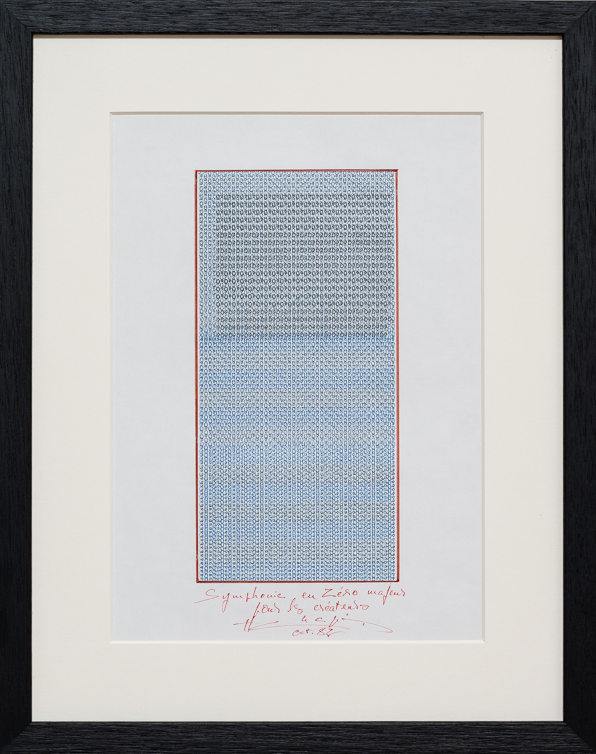
The exhibited works, mostly from the 1980s, are emblematic of Chopin’s commitment to freedom from any form of oppressive structure: through his dactylopoèmes, Chopin reconfigures the typewriter – a machine used for the efficient manufacturing of meaning – and transforms it into an artistic tool that he harnesses in the name of non-sense. Through the repetition, overlapping and distortion of linguistic and numerical symbols, the artist generates astonishingly intricate visual compositions. As numbers and letters become untethered from contexts that construct meaning and are transformed into free-floating forms that merge and morph into one another, he drains them of their signifying value and instead allows them to exist as purely aesthetic entities.
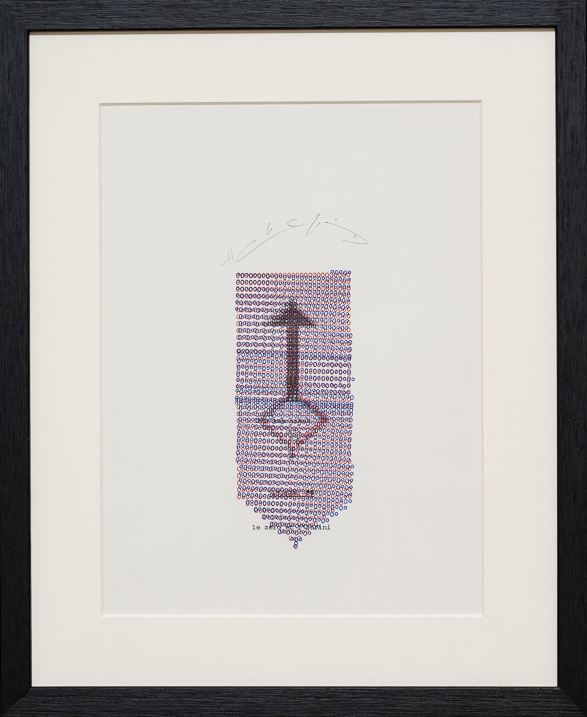
The Image in The Machine
The effect of this complex choreography of mark-making is an elaborate pattern of cross-hatching and a delicate interplay between straight and wavering forms. The subtle differences of colour and texture in Le tapis incoercible du 12.7.1983, 1983, echo the intricate work of master weavers who painstakingly interlace threads of varying hues to generate complex and rich patterns. Année flamboyante, 1983, too provides an exceptional example of Chopin’s investigations into colour. By typing with black and red ribbon onto white paper and then overlaying it with a screen of orange, Chopin subverts the effect of red ink on white paper. The result is a stunningly nuanced three-coloured composition achieved by the simplest means.
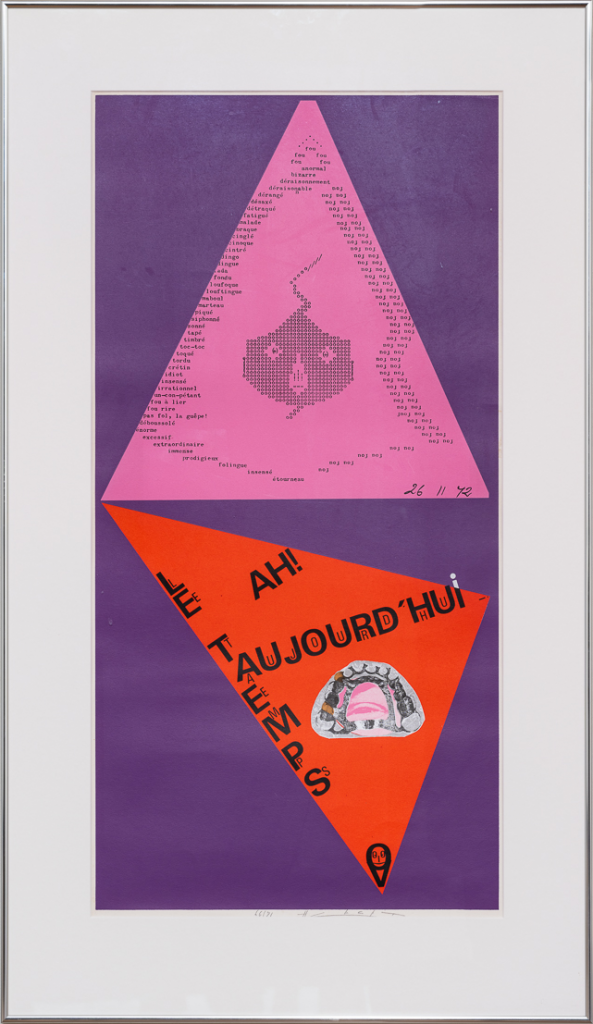
The reverberations of Chopin’s artistic experimentation continue to be felt today as he remains a vital reference for contemporary artists. In our hyper-connected world and content-driven culture, Chopin’s dactylopoèmes cut through the noise of constant communication and, in their chaos and non-sense, embrace the futility of the Word.